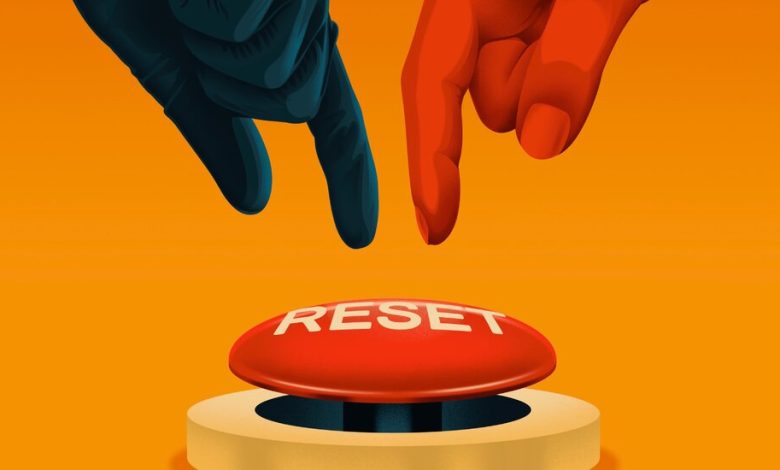How to Overhaul the C.D.C.

Long recognized as the nation’s leading public health institution and widely respected around the world, the Centers for Disease Control and Prevention has recently seen its reputation shaken and its performance compromised. As a result, public trust in the institution has eroded.
Amid that backdrop, we recently conducted an independent and bipartisan investigation of the C.D.C.’s pandemic preparedness and response during the Covid-19 pandemic. And we concluded that the agency needs a serious reset — urgently so. The health and resilience of the country hangs in the balance.
Our study was based on interviews with dozens of experts, including politically diverse policymakers, public health officials and state and local leaders; data the C.D.C. provided in briefings and reports; and a review of previous outside assessments. The takeaway is that the decline in the C.D.C.’s performance and public trust stemmed from errant leadership decisions, operational mistakes, chronic structural weaknesses and attacks from a hostile White House during the first year of the pandemic. Because of this, the agency was unable to meet the most essential demands of the crisis.
The C.D.C. stumbled terribly at the beginning of the pandemic, when it could not meet the urgent imperative to distribute Covid tests widely across the country. It then struggled to clearly and quickly communicate its changing guidance on vaccines, masks and precautions for workplaces and schools. State and local public health agencies, as well as the private sector, became exceedingly frustrated in their attempts to engage with the agency. Governors and congressional leaders lost patience, stopped listening and made their own choices. This fed a chaotic national response that put people at risk and further eroded public confidence.
The Trump administration’s brutal treatment of the C.D.C. also took a heavy toll. Agency leadership found themselves traumatized, sidelined and ill-equipped to stand their ground.
There’s so much that makes the agency crucial and worth saving and strengthening. The C.D.C. continues to be a critical technical and scientific resource to public health authorities around the country and the world. In the acute phase of the pandemic, the C.D.C. dispatched hundreds of emergency response workers to help local health leaders. The agency played an integral role in the planning and execution of the national vaccine rollout. It also responded rapidly to requests for help from many vulnerable low- and middle-income countries. In 2021, the C.D.C. also started work on a promising new Center for Forecasting and Outbreak Analytics, which now has begun to provide state-of-the-art modeling, forecasting and prediction for new outbreaks that can help leaders make more informed decisions.
But the C.D.C.’s structural weaknesses are many, and the following solutions are needed right away.
Redesign the work force
It’s a problem that the C.D.C.’s Washington presence is skeletal. If the agency is to be effective inside the federal government, it needs to engage with key members of Congress, and that requires operational power in the capital. That doesn’t mean relocating C.D.C. headquarters from Atlanta, but it does mean creating a competent Washington team of senior, seasoned C.D.C. officials with gravitas, policy expertise and an understanding of the foreign policy and security context in which C.D.C.’s special contributions fit.
Beyond that, the agency’s work force needs a redesign. The C.D.C.’s incentive structures have rewarded scientific excellence, but the agency needs more operational leaders with the skills to manage national and international epidemic control. The C.D.C. director Dr. Rochelle Walensky, who is stepping down at the end of June, was working to change that. This included requiring a substantial portion of C.D.C. staff to be trained in emergency outbreak response — an important step. The agency also needs to reform its systems of hiring and retaining new talent if it is to compete with the private sector and research universities. Other government agencies are able to bring on new hires within days during a crisis, but the C.D.C. must follow hiring processes that can take many months. This should change.
More C.D.C. employees should also be much closer to the front lines of fighting dangerous outbreaks across America. The agency should embed young talent — upward of 1,000 people — within state, tribal, local and territorial partners. This would strengthen the outbreak response of these places, build knowledge among C.D.C. staff around the challenges facing these jurisdictions and generate long-term allegiances.
Overhaul communications
“The C.D.C.’s communications are terrible” is a common refrain we’ve heard from senior elected officials. The agency is responsible for communicating new information and analysis to the public and the private sector, its assessment of the latest infectious disease threats to congressional leaders, its recommendations to the Department of Health and Human Services and the White House, and more. It also remains imperative for the agency to speak directly and meaningfully to skeptical Americans, in part by combating pervasive conspiracy thinking and dis- and misinformation. Right now these major communication demands exceed the C.D.C.’s capacities.
Big changes are needed, including the hiring of a larger work force with the skills and bandwidth to communicate with all of these groups successfully.
Revising the way the C.D.C. develops guidance for Americans has to be a top priority. There must be more consultation with outside experts and civic leaders before announcing guidance decisions that will have a major impact on U.S. society. For example, when making guidance decisions affecting schools, input from educational and political leaders should be essential.
Give more authority and budgetary flexibility
The C.D.C. is responsible for providing an up-to-the-minute picture of a pandemic across the country, but it doesn’t have the authorities needed to collect basic, anonymized outbreak data from state and local entities. If a number of states don’t provide data, or they do so too slowly, how can the C.D.C. determine the number of cases that occurred on a given day, how many people were hospitalized or died in a particular week, or what new risks and trends are emerging? Congress should provide the C.D.C. with the authority to collect that data.
Similarly, the C.D.C.’s budget process is byzantine. It has about 160 individual budget lines, and little to no ability to move funds to where they are needed in a crisis. That is not how FEMA and the Department of Defense operate amid a crisis. Congress has the power to grant the C.D.C. the essential flexibility it requires, and it should.
Congress and U.S. leadership need to act
Last summer, the C.D.C. director publicly acknowledged the agency’s mistakes. She also initiated internal changes to improve the speed, quality and communications of both guidance and emergency response, as well as the agency’s relationship with Americans. As the summer of 2023 approaches, the agency needs to show how it has put promised reforms into place. This will now fall to Dr. Walensky’s successor, and will be key for persuading leaders in Washington to consider making the changes that the C.D.C. is seeking more broadly.
Much of the responsibility to change the C.D.C.’s culture and capacities rests with C.D.C. leadership. But even greater power to reset the agency lies with the White House, Congress and the H.H.S. secretary. This historic opportunity for change cannot be squandered, and Congress must take action to improve the C.D.C.’s performance and rebuild trust.
Leaders in the Biden administration and Congress need to seize this moment. They have an opportunity to build bipartisan consensus around pragmatic reforms that will restore the C.D.C. to high performance and high trust, and ensure the safety of Americans into the future.
Tom Inglesby is the director of the Johns Hopkins Center for Health Security and has advised the C.D.C. in the past. J. Stephen Morrison is a senior vice president at the Center for Strategic and International Studies and directs its Global Health Policy Center.
.




